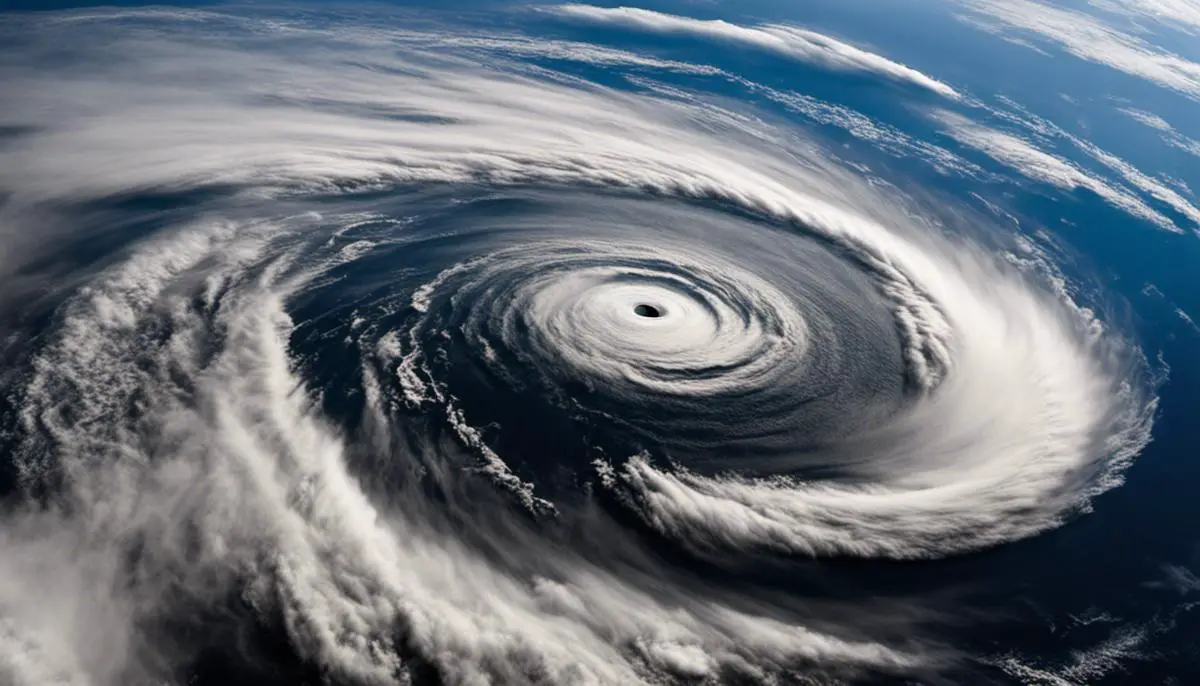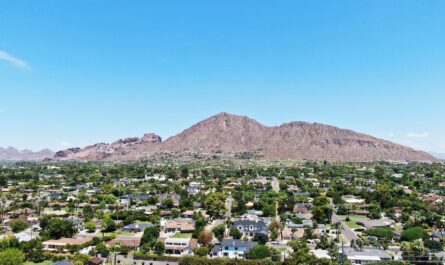Florida’s tropical climate, expansive coastline, and geographical position make it a frequent target for hurricanes. Understanding these complex climatological phenomena is not just about apprehending the force of nature. It goes far beyond to the consequence on human life, ecology, infrastructure, and the economy. In this exploration, we delve into the machinations of hurricanes including their formations, classifications under the Saffir-Simpson scale, their tumultuous history with the Sunshine State, and the resounding impact they leave. We then turn our focus towards the advances in hurricane prediction, preparations and response mechanisms that have been mobilized in the state to protect and prepare its citizens for these inevitable weather events.
Understanding Hurricanes
Understanding Hurricanes: An Insight to Florida’s Frequent Foe
Hurricanes, also known as tropical cyclones, are violent storms characterized by high-speed winds rotating around a calm center known as the eye. They form over warm ocean waters, typically beginning as disturbances in the atmosphere that gradually increase in size and strength. When these disturbances meet the right conditions – warm water, humidity, and favorable wind patterns – they can grow into tropical storms, which may eventually intensify into hurricanes.
Florida, due to its geographical location, is particularly exposed to hurricanes. With both the Atlantic Ocean and the Gulf of Mexico flanking it, the state is vulnerable to storm systems forming in either body of water. It experiences the passage of a hurricane on average once every two years, and direct landfall every two and a half years.
Behind Florida Hurricanes: The Science of Formation
The formation of hurricanes is a complex, multi-step process that typically begins with a weather disturbance off the coast of Africa. This weather disturbance, oftentimes an ordinary thunderstorm, moves westward over the warm Atlantic waters and picks up moisture. As this moisture is absorbed and starts to rise, it leaves behind an area of lower pressure below. Surrounding air rushes into this low-pressure zone, becoming warm and moist itself, and a cycle begins. As this cycle continues, a storm system develops over the ocean.
The Earth’s rotation causes the storm system to start spinning, with warm air rising in the storm’s center and cooler air being drawn in from the sides. As the warm air rises and cools off, it forms clouds, releasing heat and energy that powers the storm. The storm will continue to grow in size and strength as long as it remains over warm water and conditions stay favorable. These evolving storm systems eventually form into tropical depressions, tropical storms, and finally, hurricanes.
Understanding Florida’s Hurricane History Through the Lens of the Saffir-Simpson Scale
When assessing hurricanes, meteorologists rely on the Saffir-Simpson scale, a five-tiered system based on wind speed. Starting with Category 1, hurricanes generate winds from 74 to 95 mph, leading to minor damage particularly to unanchored mobile homes and vegetation. Intensity escalates with Category 2 hurricanes, where wind speeds from 96 to 110 mph can result in significant damage to structures like rooftops, windows, doors, and even uproot trees.
With wind speeds rising from 111 to 130 mph, Category 3 hurricanes, also known as major hurricanes, have the potential to inflict devastating damage. The top two tiers, Category 4 and 5, with wind speeds ranging from 131 to 155 mph and 157 mph or higher, respectively, lead to catastrophic damage.
Throughout its history, Florida has bared the brunt of numerous severe hurricanes. For instance, the Great Miami Hurricane of 1926, a Category 4 hurricane, claimed the lives of 372 people, marking it as one of the most intense storms in Florida’s history. More recent is the infamous Hurricane Andrew of 1992, a Category 5 storm, which annihilated thousands of homes and resulted in over $25 billion in damages. Other highly destructive hurricanes include Charley in 2004 and Irma in 2017, firmly underlining Florida’s continued susceptibility to these formidable weather phenomena.
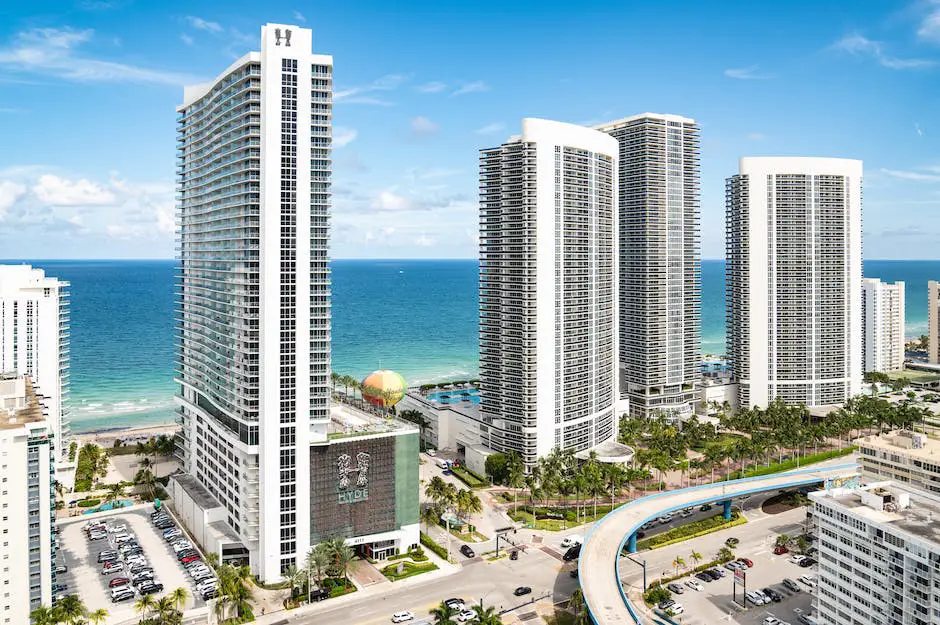
Timeline of Major Hurricanes in Florida
1900: The Miami Hurricane Paves the Way
Reflecting back to the turn of the century, The Miami Hurricane in October 1900 set a calamitous precedent for the state of Florida. This Category 4 hurricane claimed the lives of 26 individuals and caused significant infrastructural destruction. Adding to the tragedy, this deadly hurricane was succeeded by a punishing storm surge, submerging coastal communities in its path, and further contributing to the devastation.
1928: The Okeechobee Hurricane
Arriving in September 1928 and identified as a category 4 storm, the Okeechobee Hurricane tragically took over 2,500 lives – the second deadliest hurricane in recorded U.S history. The storm caused a lake to burst its banks which led to a substantial number of the fatalities.
1935: The Labor Day Hurricane
On Labor Day in 1935, another category 5 hurricane hit Florida Keys. This hurricane took more than 400 lives, making it one of the deadliest ones to have hit the state. Considered the most intense hurricane to make landfall in the U.S, it was recognized for its unusually low barometric pressure.
1960: Hurricane Donna
Occurring in September 1960, Hurricane Donna, a category 4 storm, carved a path through Florida, causing extensive damage in the Florida Keys, central and northern Florida. Despite exhaustive preparation efforts, Donna resulted in over 100 deaths across the state and inflicted an estimated $387 million in damages.
1992: Hurricane Andrew
In August 1992, Hurricane Andrew, a category 5 storm, struck the Miami-Dade County area and caused unprecedented damage. It has been noted as one of the costliest hurricanes, with an estimated cost of $25 billion in damages. At least 26 deaths were directly attributed to Andrew, with many others caused indirectly in the aftermath.
2004: Hurricanes Charley, Frances, Ivan, and Jeanne
2004 was a particularly catastrophic year for Florida as it was hit by four major hurricanes within a span of six weeks. Among these, category 4 Hurricane Charley was the strongest, causing 10 fatalities and $16 billion in damages.
2005: Hurricane Wilma
In October 2005, category 3 Hurricane Wilma set a record as the most intense hurricane ever recorded in the Atlantic basin. It hit southwestern Florida and caused massive power outages across the state. Hurricane Wilma resulted in five deaths and an estimated $20.6 billion in damages.
2017: Hurricane Irma
Hurricane Irma, another category 4 storm, struck Florida Keys and southwestern Florida in September 2017 causing 84 deaths directly and indirectly. Irma generated an estimated 185 mph maximum sustained winds and caused extensive damage amounting to approximately $50 billion – making it the fifth costliest U.S. hurricane.
1. Hurricane Michael: A Devastating Chapter in Florida’s History
In the wake of October 2018, Florida encountered severe carnage from Hurricane Michael – a formidable category 5 storm. It held the gloomy distinction of being the first category 5 hurricane to landfall in the United States since Hurricane Andrew’s devastation in 1992. The calamitous storm claimed at least 16 lives and caused widespread destruction worth an estimated $25 billion.
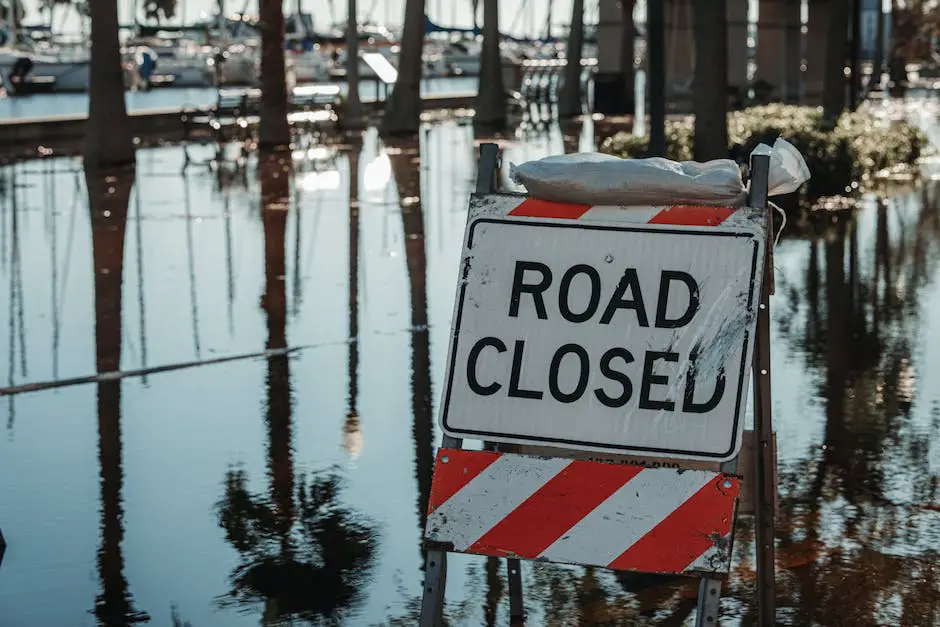
Impact Analysis and Recovery Efforts
2. The Dire Aftermath: Ecological Havoc Wrought by Florida’s Hurricanes
Florida’s rich ecology bears the brunt of these hurricanes, undergoing substantial damage, which manifests in the distressing destruction of its unique flora and fauna assemblage. The state’s protective wetlands, natural bulwarks against such hurricanes, suffer egregious erosion. Coastal vegetation isn’t spared either, its removal initiating beach erosion and hikes in freshwater body salinity due to invasive saltwater. The aftermath is often marked by sea life suffers, with fish kills triggered by plummeting oxygen levels in the wake of heavy rainfall and runoff. Birds, too, pay a heavy toll as their habitats, especially those nestled in the Florida Keys and Everglades, face obliteration.
Following the catastrophic aftermath of these hurricanes, Florida has seen a surge in concerted efforts by public and private entities to rehabilitate its diverse ecosystems. These initiatives span activities such as replanting endemic trees, resurrecting bird habitats, facilitating aquatic ecosystem recovery, and enhancing the robustness of Florida’s coastline as a natural fortress against impending storms.
Economic Impact and Recovery Following Florida Hurricanes
Hurricanes pose a major threat to the Florida economy causing billions of dollars in damage. Industries particularly vulnerable to hurricanes include tourism, agriculture, marine, and construction. Damage to infrastructure, along with a halt in tourism, can have a ripple effect throughout the local economy. Agriculture, a prominent sector in Florida, can be devastated with losses in the citrus, sugar, and vegetable crops.
In response, Federal and State governments usually enact recovery programs aimed at providing financial aid and supporting economic stabilization. Programs such as FEMA Public Assistance and Hazard Mitigation Grant Program, aid both citizens and businesses through funds for rebuilding and infrastructure restoration. Insurance coverage has also been a crucial element in the recovery process.
Hurricane Impacts and Recovery Processes in Florida
Hurricanes in Florida, in addition to causing extensive physical damage, often lead to the tragic loss and displacement of residents, as well as acute psychological distress. These devastating events can provoke shortages in staple resources such as food, water, and electricity in affected areas, and often result in an increase in health issues, ranging from physical injuries to emotional trauma.
The recovery process usually starts with immediate relief efforts, such as distributing food, water, and medical support, along with setting up temporary shelters for those who have lost their homes in the storm. Working hand in hand with non-profit organizations, government agencies work tirelessly to enact swift reaction and relief activities in the wake of a disaster. Over a more extended period, the recovery process also involves restoring homes, enhancing hurricane preparedness measures, offering trauma counseling, and providing critical healthcare services.
Following the uprooting aftermath of hurricanes, the Florida community’s response is often characterized by unity and resilience. Many native Floridians take an active part in rescue operations, donate much-needed supplies to the hurricane-impacted residents, and participate in restoring disrupted wildlife habitats. These actions not only contribute to the immediate recovery effort, but also play an important role in imparting emotional support to the affected community and strengthening the resilience of Florida’s residents against the recurrent threat of hurricanes.
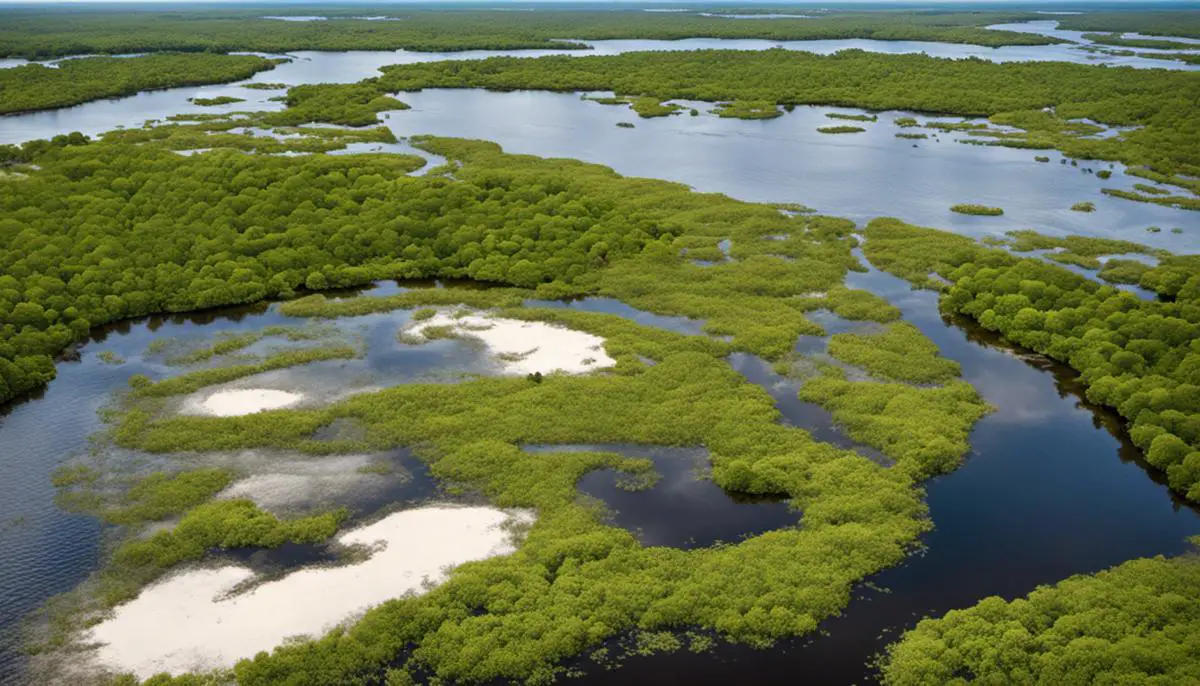
Modern Preparedness and Response
The history of hurricanes in Florida is extensive, punctuated by some of the most catastrophic storms ever experienced on U.S. soil. These significant weather events have provided critical lessons for policymakers and professionals in emergency management over the years. Florida’s readiness tactics and response strategies aimed at hurricanes have undergone significant development, incorporating technological advancements, sophisticated planning principles, and an emphasis on improving the resilience of infrastructure.Advances in Hurricane Prediction
Advance in hurricane prediction have been a significant part of Florida’s modern preparedness strategies. Enhanced technology has given forecasters more accurate tools to monitor weather patterns and predict hurricane paths. Doppler weather radars, satellites, drones, and computer modeling have led to more accurate and timely forecasts. The National Hurricane Center (NHC) in Miami, Florida now can even provide predictions five days in advance of the hurricane landfall, allowing the state to initiate early response plans.Early-Warning Systems
These advancements in prediction have strengthened the early-warning systems in Florida. The use of automated emergency alerts on cellphones, for example, allows for rapid dissemination of vital information regarding evacuation orders and emergency services. Updated building codes also mandate the installation of these systems in public structures, thereby ensuring that residents have access to up-to-date, relevant information in real-time.Infrastructure Improvements
Infrastructure improvements have also been key to Florida’s hurricane preparedness and response measures. A key aspect of this is constructing hurricane-resistant buildings. New building codes following Hurricane Andrew in 1992 ensured that structures could better withstand the high winds and heavy rains of hurricanes. These mandates cover critical aspects such as installing hurricane straps, using impact-resistant glass, and following new wind-load design protocols.Evacuation Plans and Community Preparation
Understanding the destructive force of hurricanes has led to detailed and adaptable evacuation plans in the state. These plans often include tiered evacuation routes to prevent overcrowding on highways and roads, provisions for pet evacuation, and distinct plans for each county to reflect demographic and geographical considerations. Pre-designated shelters ready with supplies, personnel, and facilities are integral to these plans. Community preparation is another critical aspect of Florida’s modern approach to hurricane preparedness. Educational programs and drills are conducted regularly to ensure citizens know what steps to take before, during, and after a hurricane. State agencies work with local communities to develop emergency plans, conduct assessments, and provide resources for hurricane preparation.Enhancing Community Resilience
To enhance community resilience, Florida has also put efforts into diversifying its energy grid and investing in backup power systems. After learning from power outages caused by severe storms, new power delivery standards and requirements for backup power at critical facilities like hospitals, nursing homes, and police stations have been established. Furthermore, Florida has established the Statewide Mutual Aid Agreement, which is designed to allow emergency responders and resources from one part of the state to aid another during a crisis, creating a network of emergency support throughout the whole state.Conclusion
Thus, Florida’s modern preparedness and response strategy is a combination of leveraging technology for accurate predictions, implementing robust evacuation plans, making infrastructure improvements, and engaging the community in hurricane preparedness.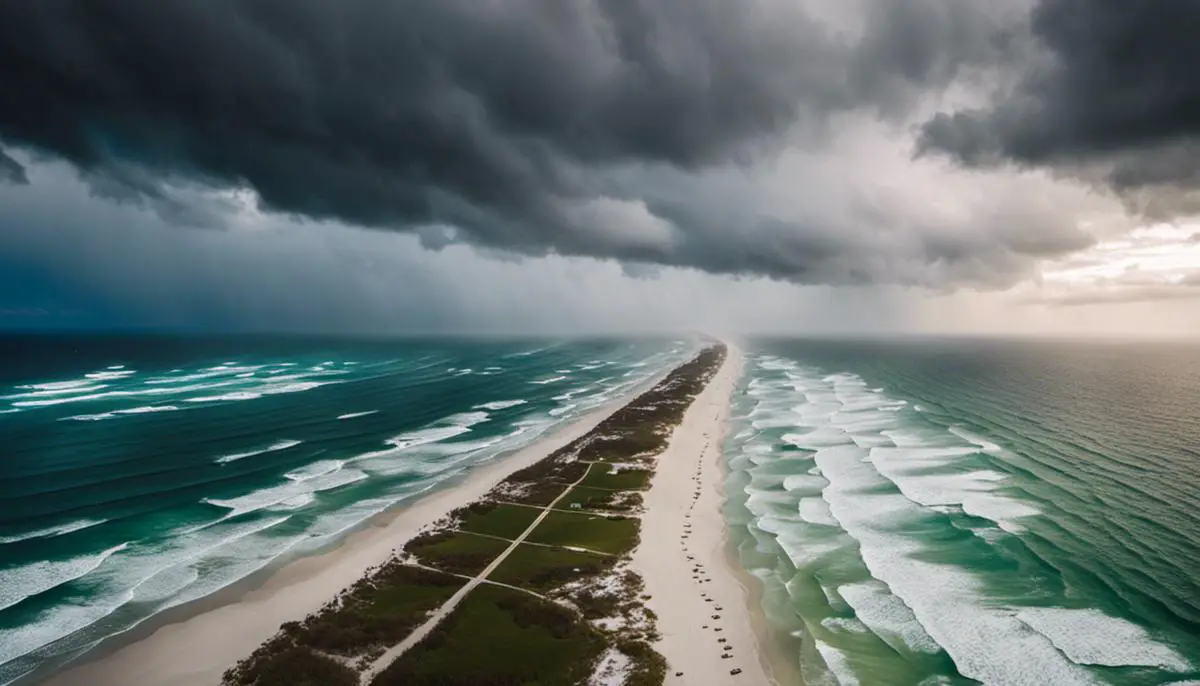
With an intricate history of hurricanes, Florida’s story is one of resilience and learning. The continuous evolution of strategies and technologies for prediction, preparation, and response to these storms ensures Florida’s readiness for future events. This understanding of past hurricanes, the devastation they’ve caused and the recovery efforts put forth provides us with a critical lens to view the ongoing battle between humans and nature. It underscores the importance of adaptive preparedness policies, the strength of communities, and innovative approaches to reducing hurricane vulnerability. The fight against hurricanes is far from over, but armed with knowledge and determination, Florida strives to weather every storm that comes its way.
